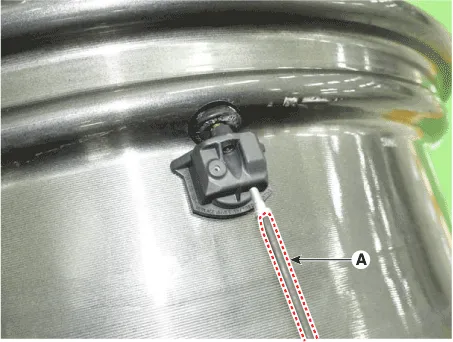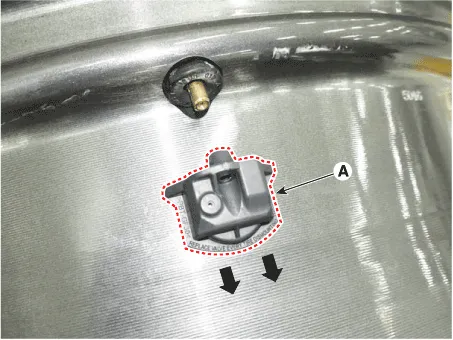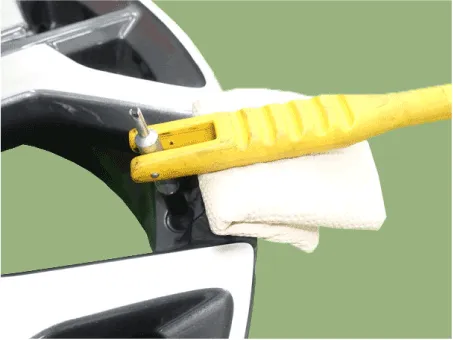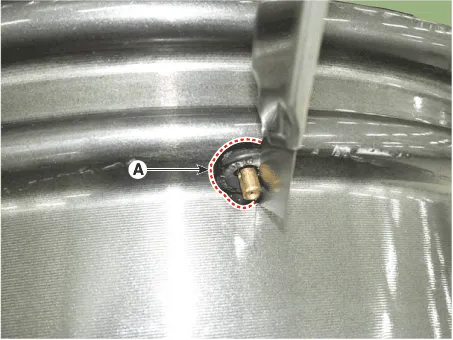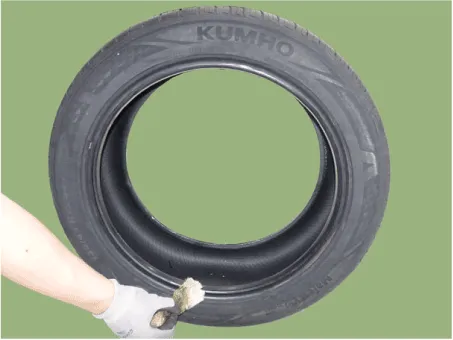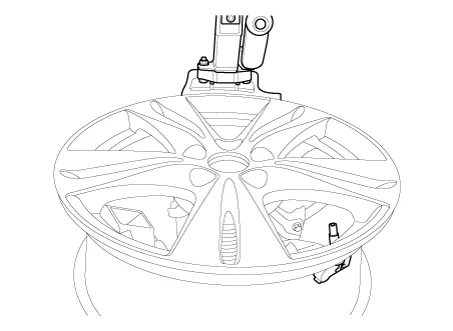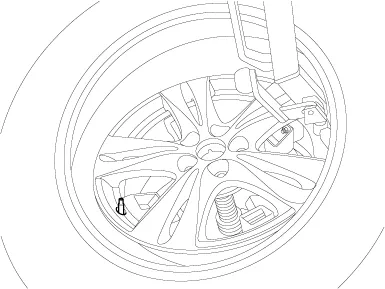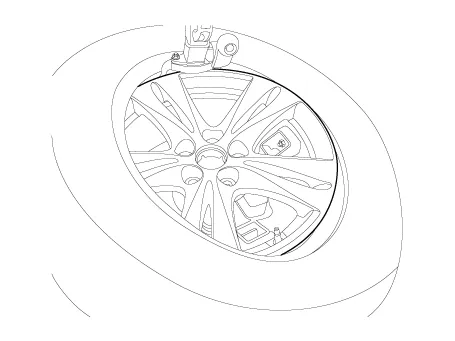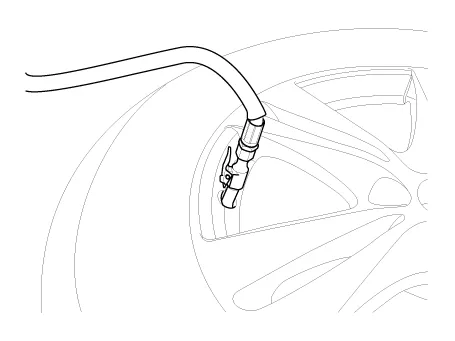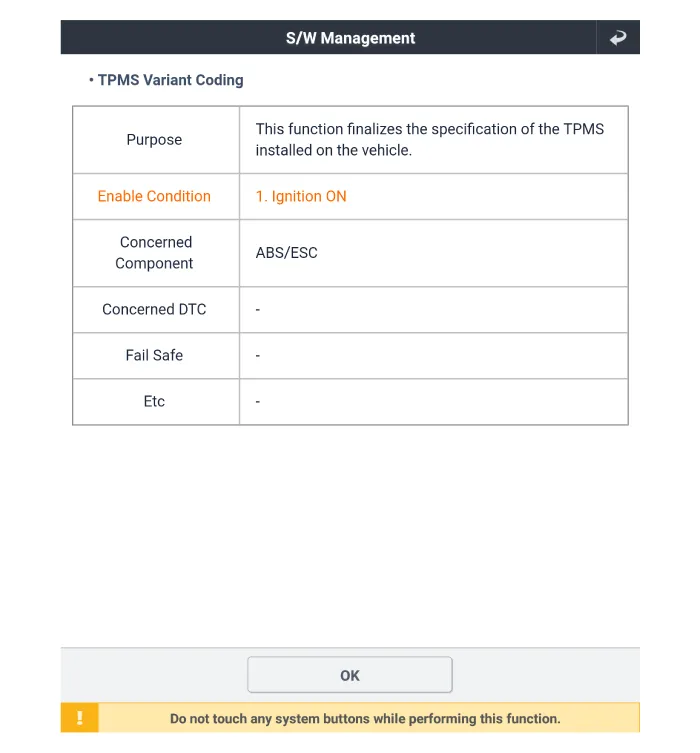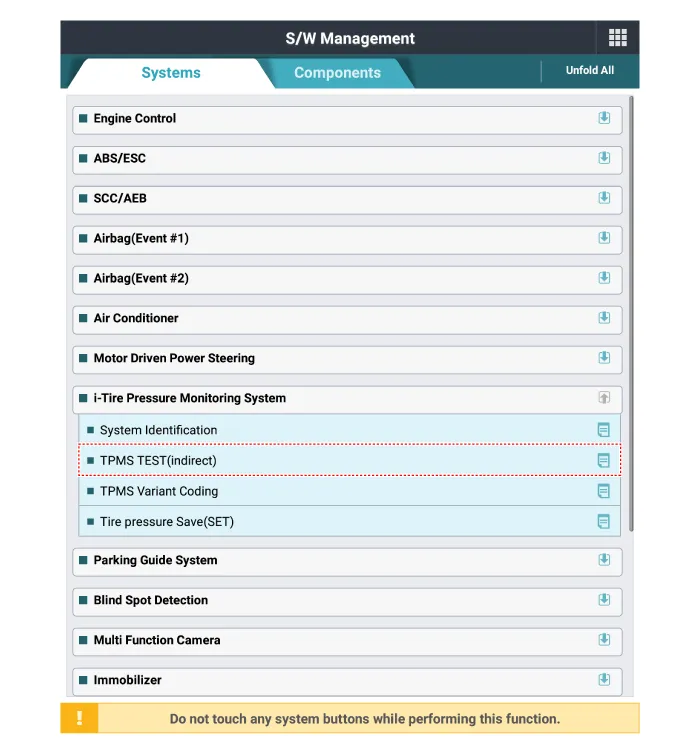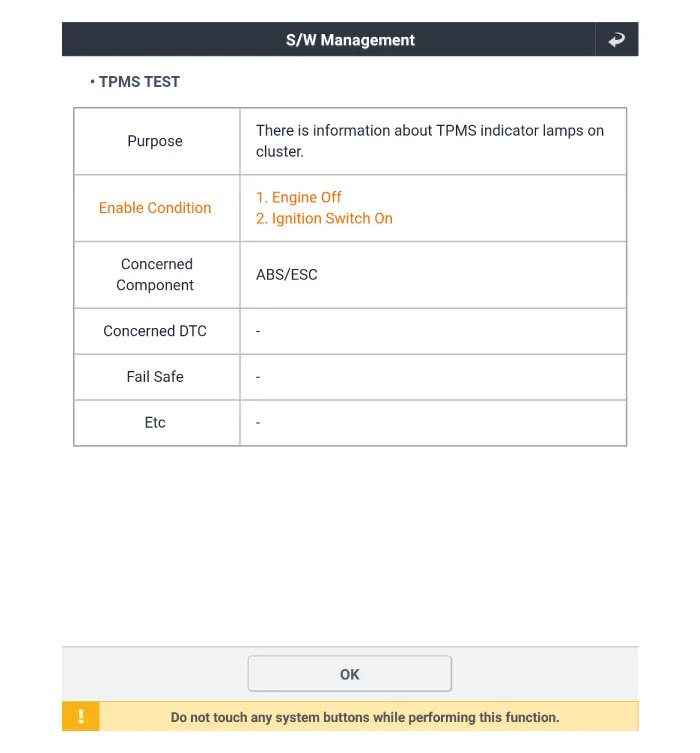Kia Optima DL3: Tire Pressure Monitoring System / TPMS Sensor
Description and operation
| Description |
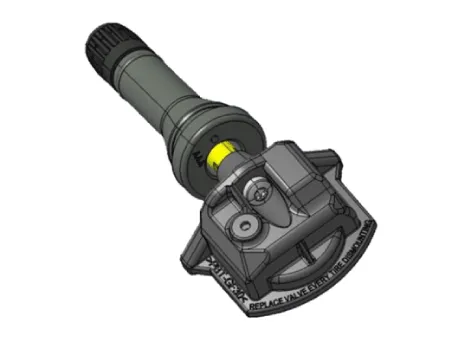
| 1. |
Function
|
| 2. |
Structure and features
|
TPMS Automatic Location Learning
| • |
Wheel angular velocity of wheels are different from each other in the following cases: |
| 1) |
Slip for each axis occurs differently. |
| 2) |
Rotation radius (the radius of curve) for each wheel is different. |
| 3) |
Tire wear, internal pressure, tire specifications, etc. for each tire are different. |
| • |
TPMS sensor is transmitted to RF signal at only specific phase (the angle of the tire) in the learning mode. |
| • |
TPMS receiver checks each tire phase (tire angle) information on receiving RF signals from the sensor. |
| • |
Every time RF signals from sensor IDs 1, 2, 3, and 4 are received, the ID with the highest correlation among the phase of each collected wheel is transmitted. (In other words, each time RF signal is received, the phase of the tire is transmitted to the most constant wheel.) |
| • |
TPMS sensor transmits the RF signal at intervals of 16 seconds in the learning mode. |
| • |
After stopping or parking for more than 19 minutes, automatic learning function in every driving position is performed. |
| • |
The sensor is converted to Parking Mode when stopped or parked for more than 15 minutes. When acceleration of over 4g (15-20km/h) is detected in Parking Mode, it is converted to First Block Mode. |
Repair procedures
| Removal |
| 1. |
Remove the wheel and tire. (Refer to Suspension System - "Wheel") |
| 2. |
Remove the screw with torx driver (A).
|
| 3. |
Remove the sensor housing (A) from the valve in the direction of the arrow.
|
| 4. |
Use the valve mounting tool to pull out the valve until it is entirely out of the lower hole.
|
| 5. |
Apply lubricant to the surface of the new valve, and then mount it through the valve hole of the wheel.
|
| 6. |
Apply soapy water or lubricant to the upper/lower bead section of the tire.
|
| 7. |
To fit the bottom bead, position the sensor at the 5 o’clock position relative to the head on the tire changing machine
|
| 8. |
Rotate the rim clockwise, and push down on the tire at the 3 o’clock position to fit bottom bead.
|
| 9. |
After bottom bead is on tire, rotate the rim until the sensor is at the 5 o’clock position relative to the head on the tire changing machine. Push down on the tire at the 3 o’clock position and rotate the rim clockwise to fit the top bead.
|
| 10. |
Inflate the tire until both beads seat.
|
| 11. |
Adjust the tire pressure according to the recommended tire pressure for the vehicle.
|
| 12. |
If the TPMS sensor malfunctions, you must perform TPMS sensor learning. Replace any faulty sensors and perform TPMS sensor learning. |
| Diagnosis procedure by using diagnostic device |
As manual for diagnosis methods by using diagnosis device, the main contents are as follows:
| 1. |
Connect self-diagnosis connector(16pins) located in the lower of driver side crash pad to self-diagnosis device, and then turn the self-diagnosis device after key is ON. |
| 2. |
Select the "vehicle model" and "TPMS" on KDS vehicle selection screen, then select OK. [TPMS Variant Coding]
[TPMS TEST]
|
Components and components location Components 1. Integrated Body Control Unit (IBU) 2. TPMS sensor (FL) 3. TPMS sensor (RL) 4.
Description and operation Description TPMS Receiver : IBU (Integrated Body Control Unit) integrated management 1. Mode (1) Virgin State – The receiver as a sole part is shipped in this state.
Other information:
Kia Optima DL3 2019-2025 Service and Repair Manual: Integrated Body Control Unit (IBU)
Components and components location Component Location 1. Integrated Body Control Unit (IBU) Schematic diagrams Connector and Terminal Function [Non-Smart key] Pin Function Connector A Connector B
Kia Optima DL3 2019-2025 Service and Repair Manual: Relaxion Comfort Seat
Components and components location Component Location 1. Relaxion comfort switch 2. Walk-in switch 3. Relaxion comfort seat unit (RCSU) Schematic diagrams Connector and Terminal Function Pin Function Connector A Co
Categories
- Manuals Home
- Kia Optima Owners Manual
- Kia Optima Service Manual
- Features of your vehicle
- Suspension System
- Rear Combination Lamp
- New on site
- Most important about car


